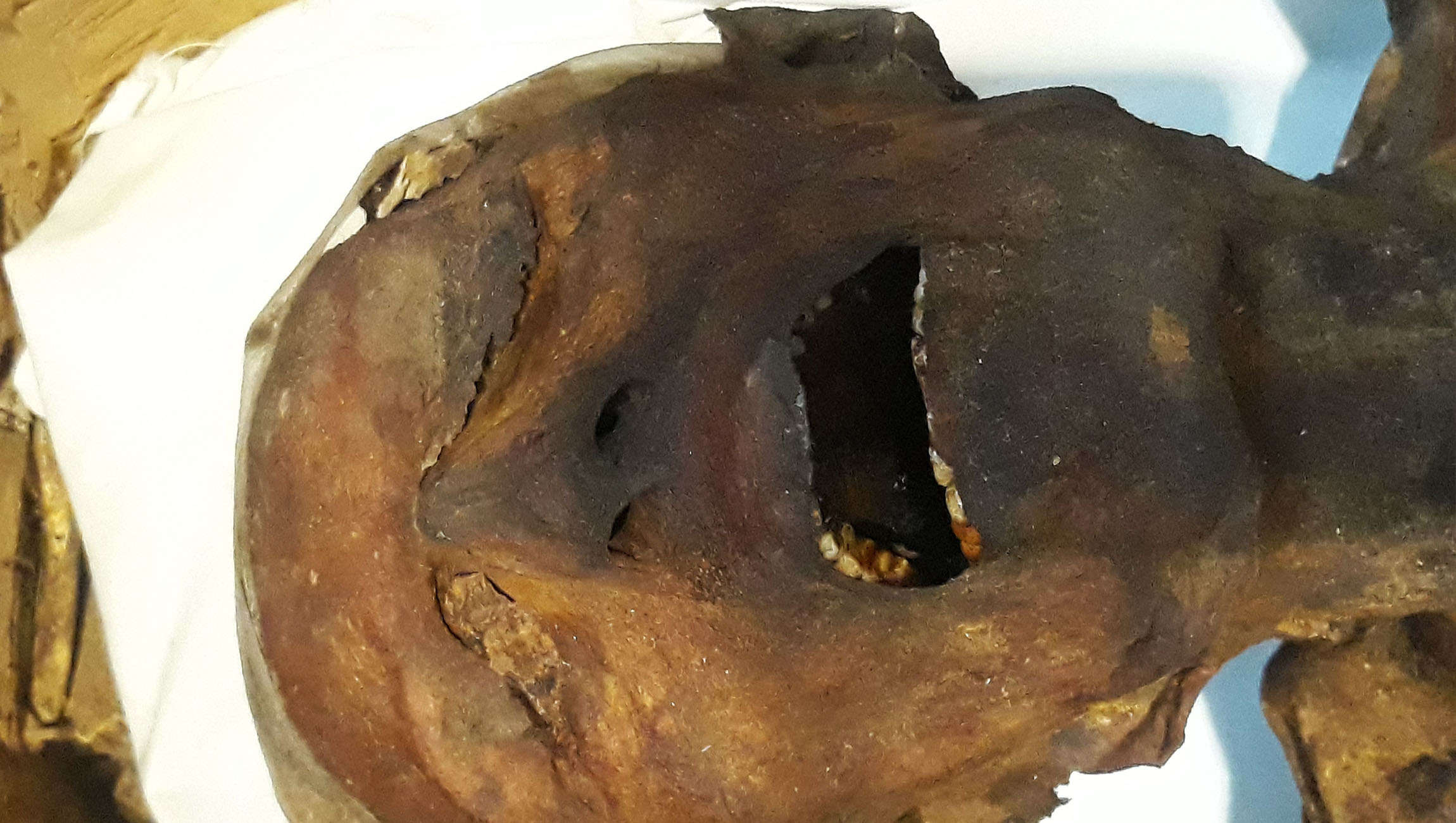Create a free profile to get unlimited access to exclusive videos, sweepstakes, and more!
The “screaming mummy” didn’t really scream at the time of her death—or did she?

In the desert of Egypt and the sands of time, a mystery remained buried for thousands of years.
The “screaming mummy” was first discovered in 1881. Believed to have once been a princess, she lay in the Royal Cachette of Deir El-Bahari, where 21st and 22nd dynasty priests had hidden the mummified bodies of deceased royals so grave robbers would never find them. Now the 3,000-year-old mummy has recently been re-examined by famous Egyptologist Zahi Hawass and Cairo Univeristy professor of radiology Sahar Saleem. Hawass has deemed the cause of death for “Unknown Woman A” to be atherosclerosis of the coronary arteries that struck her with a sudden, and fatal, heart attack. But did she really die screaming?
Hawass claimed that the princess (who was in her 60s at the time) had died in the same cross-legged posture she was mummified in. He also assumed that when her head tilted to the side post-mortem, her jaw dropped, and her face was frozen that way by rigor mortis. Embalmers then supposedly mummified the body quickly while it was still in a state of rigor mortis, before it started to relax or decomposition set in. Another assumption was that the mouth was so stubbornly fixed in a “scream” by rigor mortis that the embalmers could not wrap it tightly enough to put her jaw back in place. This might be coming from Hawass himself, but something sounds off.
“It's simply gravity working against muscles and ligaments that are no longer functional; it is not uncommon,” explained anthropologist Andrew Wade of McMaster University, who was not involved in the study. “Had the wrappings been tight about the jaw, it would typically have held the mouth closed. It is possible that the process of drying out the body reduced the thickness of soft tissue in this area, allowing for some slack.”
The dead can speak through what they leave behind—but they cannot scream. When you scream, you engage muscles, and you need a functioning brain to do that. It is impossible for a dead body with no brain activity to consciously remain screaming. The lower jaw would have slumped, except instead of making the mummy’s expression look like less of a scream, jaw relaxation made a face whose mouth was probably closed at the time of death appear to be screaming into eternity. This phenomenon also happened in a mummy known as “Unknown Man E” (top).
There is something else suspicious in Hawass’ statements, and that is the idea of the body being mummified so fast. Mummification typically took upwards of 70 days for royals. After the brain and internal organs were removed, the body was covered in natron salt from the Nile river to dry out for weeks. Organs were mummified on their own, either to be wrapped and placed back in the body or in canopic jars like those of the iconic King Tutankhamun. Wrapping the mummies of individuals with high status involved a long, meticulous process of covering the dehydraded body in oils and resins, carefully wrapping every limb with linen wrappings while chanting prayers and spells. The wrappings often included amulets and tiny figurines called shabti that would work as royal servants in the afterlife.
“The goal of mummification is to preserve the body prior to decomposition, but the process would have left plenty of time for the body to relax from rigor,” Wade said. “As this is the mummy of a purported royal person, they would have received more attention and funerary processes than would a non-royal person who could afford mummification, but the process is a long one in either case.”
Rumors of another reason the process would be extended have persisted over time. Some believe that the bodies of women were left to decompose for at least a few more days for fear of necrophilia. That, according to Wade, is an ancient urban legend.
“The idea of postponing the embalming to deter necrophiles comes to us from Herodotus, whose account has been shown to be little more than an ancient tourist story by the empirical evidence,” he said regarding this rumor. “He also has a lovely account of giant gold-digging ants.”
At least science has finally unwrapped the truth about the screaming mummy.


























